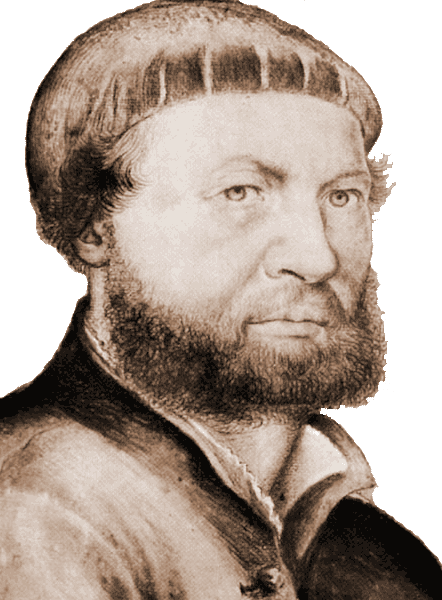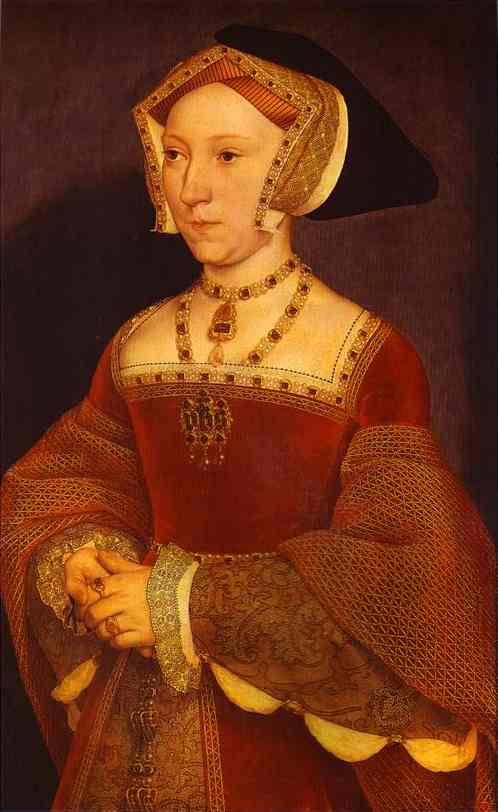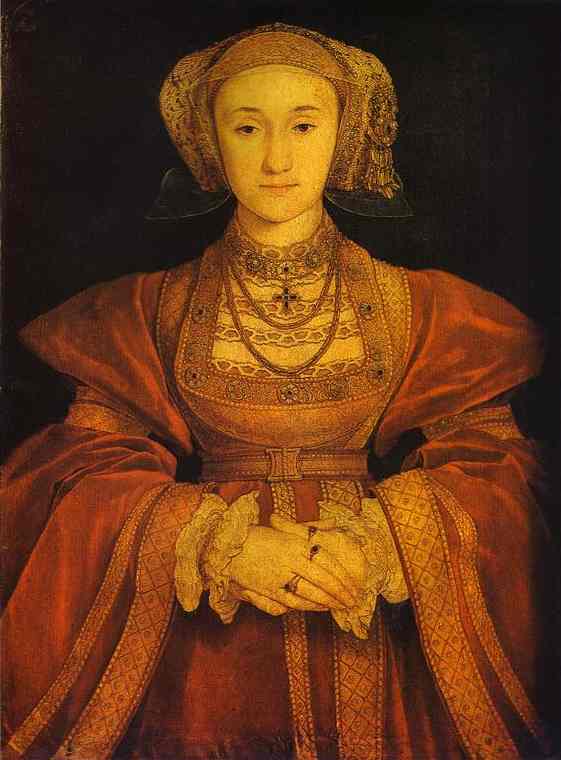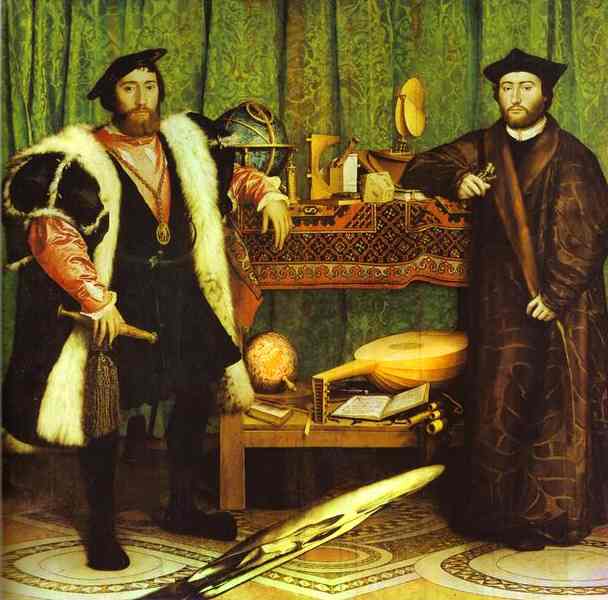








The ill-fated third wife of Henry VIII dies after giving birth to her husband's desperately hoped-for male heir, later Edward VI (1547-53). Jane Seymour was hurriedly married to the King following the disgrace and execution of Anne Boleyn in May 1536. Pious contemporary accounts stress her good nature (in contrast to the denigrated Anne), but not much of that is allowed to surface in Holbein's portriat, which depicts a figure frozen in an official sense of responsibility. The simplicity of the shadowed background accentuates the increasing richness and boldness of design and adornment in Henrician court fashion, and the artist's sill is pre-eminent in creating the sheen and lustre of the precious stones. Great attention is paid to the realism of the silver thread in the queen's dress ....

Despite its bland, unprepossessing appearance, this royal commission is coloured by a controversial history. Holbein was placed in an impossible position: despatched to Duren with orders to produce an instant likeness of Henry VIII's next intended bride, he needed to exercise diplomacy and tact -- he would have had to show the results of his rapid sittings to the forign officials. As it is, Anne's dress semms to have fascinated him more than the strangely lifeless symmetry of her features. Henry's displeasure at finding Anne of Cleeves more like a 'fat flanders mare' when she arrived for the marriage ceremony in January 1540 cost Holbein dear in prestige, and he received no further important work from this quarter.

From 1532 until he became firmly ensconced at Henry VIII's court in 1536, Holbein was dependent on the patronage of the German Steelyard merchants. His allegorical works for the enabled him to use emblems with increasing fluency, as is very apparent here, in a tour de force aimed at an audience beyond Holbein's German circle.
This ambitious work alludes to the preoccupation of the two diplomats it portrays in the fraught year of 1533; Jean de Dinteville, on the left, was in England on a mission for Francis I apropos of Henry's quarrel with the papacy over his marriage to Anne Boleyn in May, De Salve (later Bishop of Lavaur) probably gave his friend diplomatic and moral support. The painting was also a means by which Holbein might impinge on court circles as a serious student of religious reform and tolerance, then crucial issues in England (and after his experiences in Basle, crucial to Holbein too). In this sense, the painter is in league with his sitters.